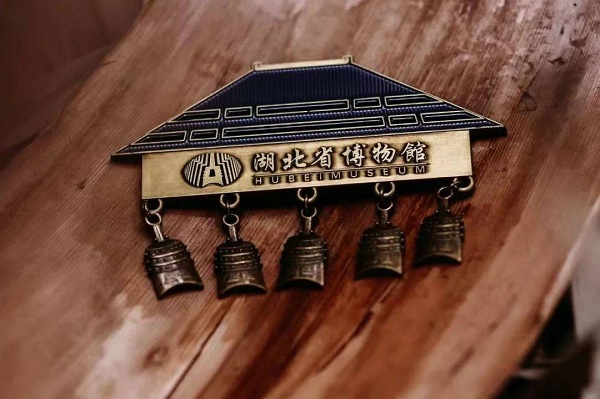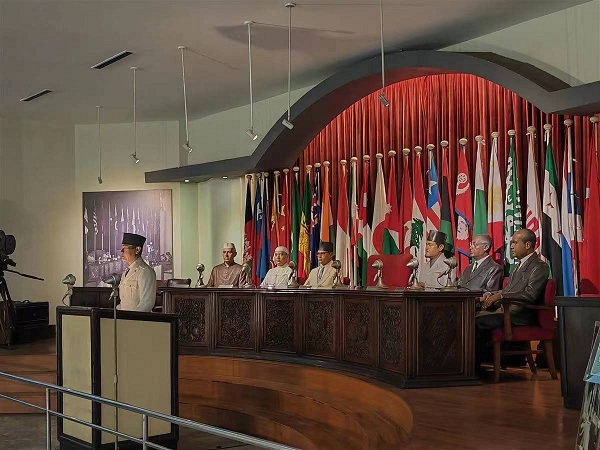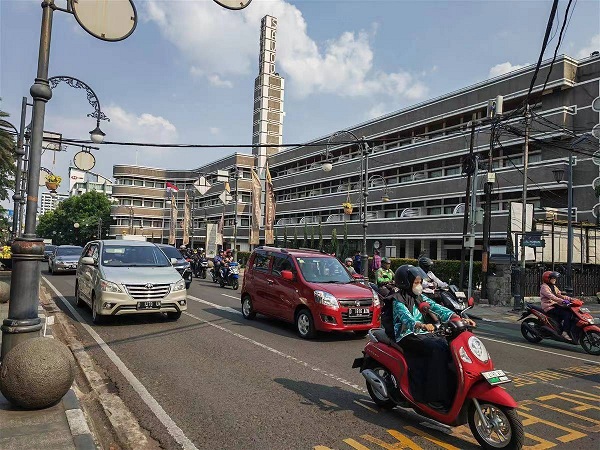Following the Belt and Road with Chinese chimes: Exploring the 'China speed' with Whoosh
On Oct 20, a chime performance was staged at the Hubei Provincial Museum in Wuhan, capital city of Central China's Hubei Province.
After the magnificent performance of "The Butterfly Lovers," the concert hall rang with thunderous applause. When I left the hall, I immediately bought ten chime-shaped refrigerator magnets and wind bells and put them in my backpack.

There is a refrigerator magnet of ancient Chinese chimes. [Photo/Hubei Daily]
The Zenghouyi chime bells are on display at the Hubei Provincial Museum. Unearthed in Suizhou in 1978, the chime bells are the most numerous, best preserved, and complete set of chimes ever found in China, representing the highest achievement of ritual and music culture in the pre-Qin period.
On October 26, I gave one of the chime-shaped wind bells to Sambas, who oversees safety production at PT. Yangtze Optical Fibre Indonesia and told him the story of the chimes.
To better understand the history between the two countries, we went to the National Museum of Indonesia, where the oldest collection of Chinese porcelain originates from the Han Dynasty. According to the Book of Han, the spice "Jishexiang," popular during the Han dynasty, derived from the Indonesian archipelago.

Museum of The Asian-African Conference in Bandung, Indonesia. [Photo/Hubei Daily]
For thousands of years, China and Indonesia have enjoyed frequent exchanges. Now, the two countries are connected by optical fibers, which are as thin as human hair and can simultaneously hold 8 billion people on the phone.
During the interview, we boarded the Jakarta-Bandung high-speed train, jointly built by China and Indonesia, and traveled from Jakarta to Bandung.
The new bullet train left the Halim railway station in East Jakarta and headed to Bandung, Indonesia's third-largest city and a major arts and culture hub.
The Indonesian named the train "Whoosh," inspired by the sound of the high-speed train whizzing by and the abbreviation of time-saving, efficiency, and reliability in Indonesian.
When queuing for tickets, a station employee told us that even on weekdays, it is not easy to get a window seat, and it could be even more challenging to be accessible on weekends.
Indonesian locals told us that before the completion of the high-speed rail, Jakarta and Bandung were connected by an old railway built more than 100 years ago, with a speed of just over 50 kilometers per hour.

A glimpse of the street in the city of Bandung, Indonesia. [Photo/Hubei Daily]
On the way to our interview, we also observed many electric cars and SUVs of Chery, Dongfeng, and Wuling from China on the road of Jakarta. Undoubtedly, the door to the up-and-coming "Land of Thousand Islands" market is now opening wider and wider.


